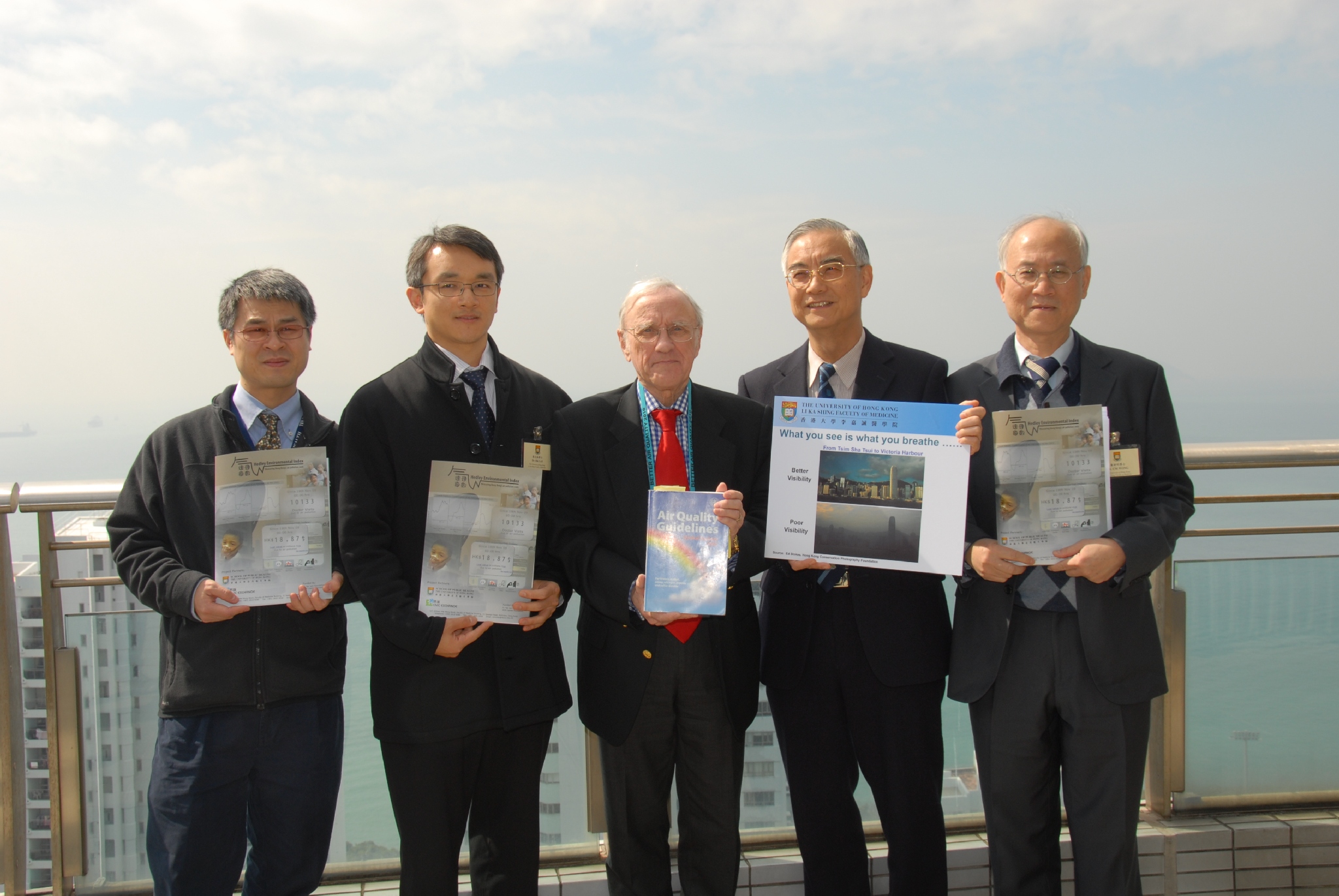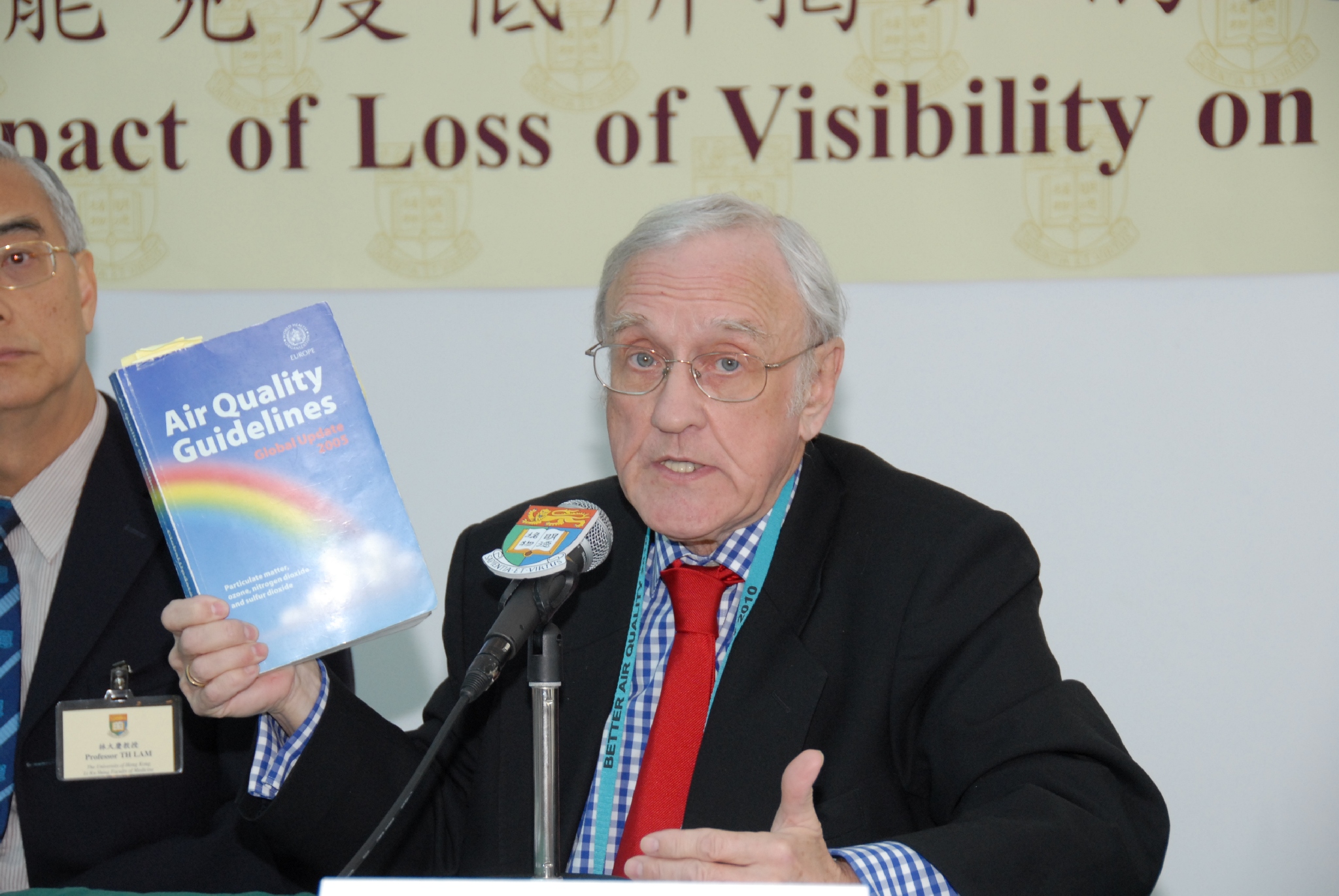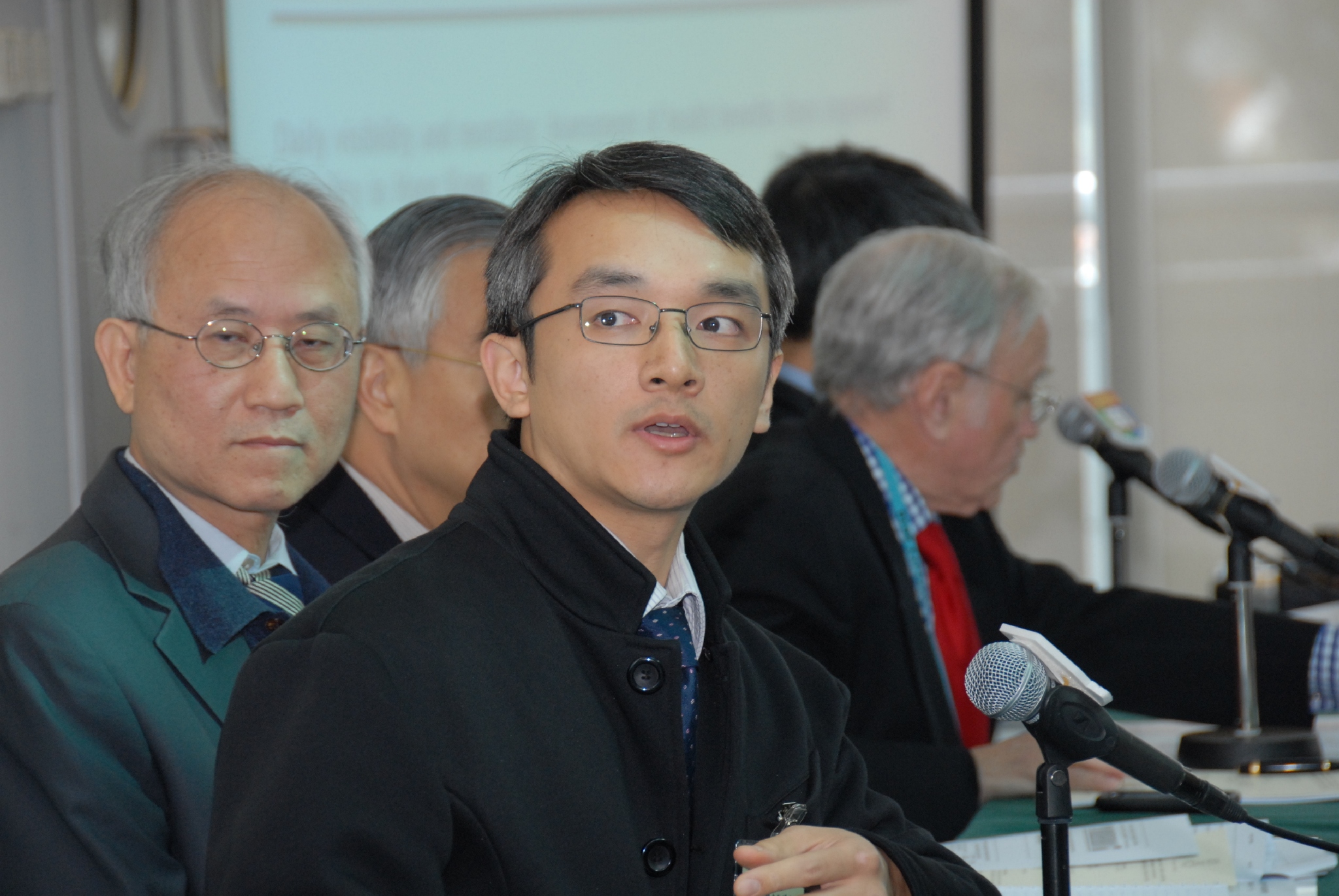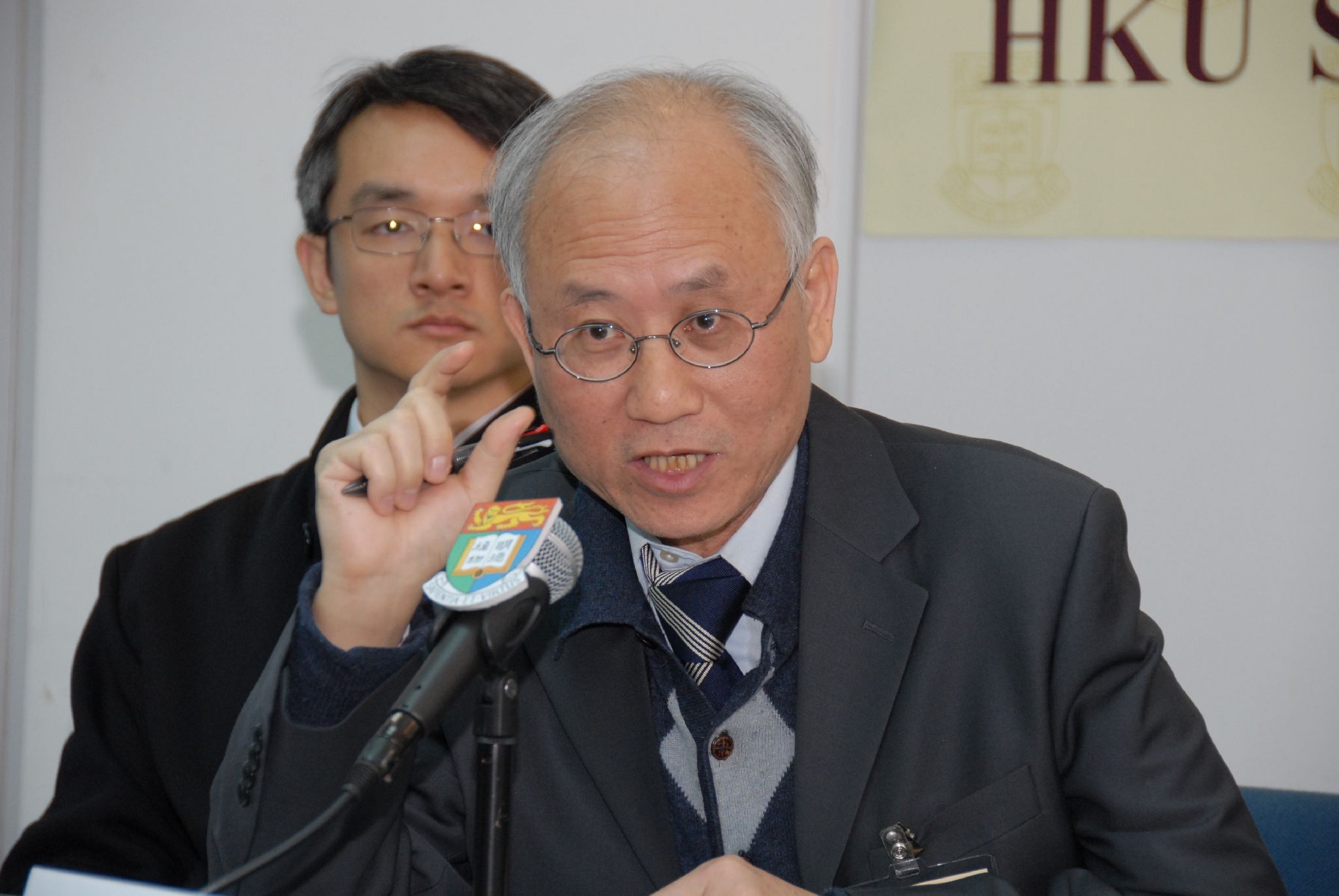Media
HKU Study on Impact of Loss of Visibility on Mortality Risks: A Report of Regional and Global Importance
19 Jan 2011
Hong Kong has suffered from progressive environmental degradation due to air pollution over many years, while at the same time the visibility has deteriorated significantly. Researchers from The University of Hong Kong Li Ka Shing Faculty of Medicine conducteda research to analyse data on visibility and mortality during 1996-2006 and determined theimpact of loss of visibility on community health in Hong Kong. The results show that foreach 6.5km reduction in visibility, there is a 1.13% increase in all natural (non-accidental) causes of death, accounting for about 450 deaths. By applying the visibility measurement result, over the 4 years in 2007-2010, poor visibility was associated with 1,200 deaths annually in Hong Kong, a total of 4,800 additional deaths. The research was published in the journal Environmental Research.
Dr. WONG Chit-ming, Associate Professor of the School of Public Health, The University of Hong Kong Li Ka Shing Faculty of Medicine says, "This is the first time that visibility has been used as an indicator of air quality and its association with population health in Hong Kong and it is also one of the first reports worldwide that used loss of visibility in the assessment of health effects."
Professor Anthony J HEDLEY, Honorary Professor of the School of Public Health, The University of Hong Kong Li Ka Shing Faculty of Medicine, and principal researcher in the study says, "It is important to recognise that avoidable mortality associated with declining visibility is only the tip of a massive iceberg of harm to health and that this ‘epidemic' can extend more than 50 years. Air quality is unlikely to improve in the near future because the government refuses to adopt international guidelines for air quality management and health protection."
About the study:
In the study, daily visibility data and daily mortality records between 1996-2006 were used to examine the impact of variations in visibility on specific causes of death. Visibility measurements on 4,018 days and 360,000 deaths were included in the analysis. The research team also took account of many other factors which may affect daily mortality patterns. These included daily temperature, humidity, days of the week and infectious disease epidemics such as influenza.
Important findings:
The results show that for each 6.5km reduction in visibility, from a clear horizon of 30km, there is a 1.13% increase in all natural (non-accidental) causes of death, accounting for about 450 deaths. In 2007-2010 the mean annual visibility in Hong Kong was 12.6km and the average annual deaths were about 40,000. This indicates that over these 4 years, loss of visibility was associated with 1,200 deaths annually, a total of 4,800 additional deaths.
Dr. THACH Thuan-quoc, Honorary Assistant Professor of the School of Public Health, The University of Hong Kong Li Ka Shing Faculty of Medicine reviews, "The majority of the additional avoidable deaths were due to respiratory and cardiovascular disease and that there was no significant increase in deaths due to accidents and trauma."
The researchers conducted a detailed additional analysis of the relationship between air pollutants and visibility, particularly respirable particulates (PM10 and PM2.5) and nitrogen dioxide (NO2). They found that there is a very strong statistical relationship between daily concentrations of these pollutants and daily visibility after taking account of meteorological factors such as humidity.
Dr. LAI Hak-kan, Honorary Assistant Professor of the School of Public Health, The University of Hong Kong Li Ka Shing Faculty of Medicine says, "These data clearly indicates a causal relationship between reduced visibility and the increase in daily mortality risks."
Public Health Implications:
The Environmental Health Research Team in the School of Public Health said that the continuing poor air quality in Hong Kong is a major cause of health problems. This is demonstrated on an hourly basis by the Hedley Environmental Index (HEI) jointly launched by the School of Public Health and Civic Exchange (http://hedleyindex.sph.hku.hk/). The Team plans to add visibility measures to the predictors of bad outcomes to enhance the environmental audit and accountability.
Professor Anthony J HEDLEY, Honorary Professor of the School of Public Health and principal researcher of the study emphasises that, "Visibility is now the most dominant feature of Hong Kong's environmental air quality problem with serious implications for health, economic activities and the overall status and brand value of the SAR."
Professor LAM Tai-hing, Sir Robert Kotewall Professor in Public Health, Director of the School of Public Health, The University of Hong Kong Li Ka Shing Faculty of Medicine says, "The research team had provided the public, media and policy makers with a valid, useful and readily applicable measure of environmental health risks." He urged the government to take immediate radical action to address the problem.
About Visibility in Hong Kong:
In urban areas, visibility is regarded as a primary index of ambient air quality. Loss of visibility is a well recognised and easily measured manifestation of air pollution. Visibility in Hong Kong has deteriorated significantly over 40 years and the number of days with visibility below 8km in the absence of fog, mist or rainfall, has substantially increased from 7 days in 1968 to 46 days in 2010. In Hong Kong and the Pearl River Delta region, increasing fossil fuel consumption has resulted in a rapid growth of emissions and has led to increased air pollution and degradation of visibility. This is mainly caused by increasing concentrations of fine particulate matter and photochemical pollutants which increase the scattering of light.
About the research team:
The study was performed by the Environmental Health Research Team of the School of Public Health, The University of Hong Kong Li Ka Shing Faculty of Medicine. The team is led by Dr. WONG Chit-ming; other members include Dr. THACH Thuan-quoc, Dr. LAI Hakkan and Dr. YANG Lin as well as Professor Anthony J HEDLEY as the advisor.
For news photos and powerpoint slides, please visit the website at:
http://www.med.hku.hk/v1/news-and-events/press-releases/






